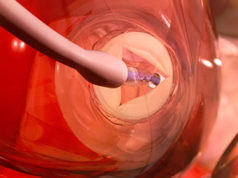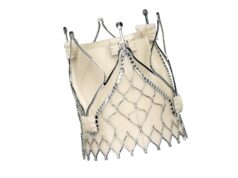
Sung-Han Yoon (Cedars-Sinai Heart Institute, Los Angeles, USA) and others report in the Journal of the American College of Cardiology that all-cause mortality at two years in patients with bicuspid aortic stenosis undergoing transcatheter aortic valve implantation (TAVI) is similar to that of patients with tricuspid aortic stenosis. When a first-generation device is used, the rate of adverse procedural events is significantly greater among bicuspid patients. However, when the newer-generation devices are used, the procedural outcomes were similar between bicuspid and tricuspid aortic stenosis.
According to the authors, previous studies that compared TAVI in patients with bicuspid aortic stenosis with that in patients with tricuspid aortic stenosis were “limited by clear baseline differences in age and comorbidities favouring the bicuspid aortic stenosis population compared to tricuspid aortic stenosis”. They note that the use of TAVI in patients with bicuspid aortic stenosis “warrants special attention” because the indication of TAVR is expanding in a younger and lower-surgical risk patients, and the prevalence of bicuspid aortic valve is higher in a younger population.. Therefore, Yoon et al—using a propensity-matched analysis—compared clinical outcomes of bicuspid patients who had undergone TAVI with those of tricuspid patients.
In the propensity-score matched cohort, 546 patients with bicuspid aortic stenosis (of 576 overall) who underwent TAVI during the study period (April 2005—May 2016) were compared with 546 patients with bicuspid stenosis (of 5,900 overall) who underwent TAVI during the same timeframe. Overall, bicuspid patients had significantly more frequent conversion to surgery, implantation of a second valve, moderate or severe paravalvular leak and lower device success than tricuspid patients. However, when stratified by device type, procedural complications were only higher in patients with bicuspid aortic stenosis when the first-generation devices (Sapien XT and CoreValve) were used. In contrast, procedural outcomes were similar between bicuspid and tricuspid aortic stenosis, when the new-generation devices were used. Yoon et al note: “The new-generation devices were developed to mitigate the critical limitations of the early generation devices: significant paravalvular leak, difficulty with optimal positioning, and vascular complications.” They add that the external sealing cuff of the new-generation device Sapien 3 (Edwards Lifesciences) “waives the extreme oversizing and mitigate the morphological challenges of bicuspid aortic stenosis”.
Furthermore, irrespective of the device used, there were no significant differences between bicuspid and tricuspid patients in terms of 30-day mortality, stroke, life-threatening bleeding, major vascular complication and stage 2 or 3 acute kidney injury. There were also no significant differences between groups in cumulative event rates for all-cause mortality at the one-year and two-year follow-up points—this finding was again irrespective of the device used. The authors comment that these results suggest that “long-term mortality of patients with bicuspid aortic stenosis is determined by multiple factors that also affect the prognosis of the tricuspid aortic stenosis population”.
Yoon et al state that “given the nature of transcatheter heart valves”, future studies of TAVI in patients with bicuspid aortic stenosis should “evaluate the association between types of bicuspid aortic valve and outcomes after TAVI”. They add that the “management of concomitant aortopathy in treating patients with bicuspid aortic valve should be taken into account”. “Given the expanding indication of TAVI for younger and lower-risk patients, physicians will face the dilemma in treating relatively younger patients with bicuspid aortic stenosis and concomitant aortopathy,” they advise.
Yoon told Cardiovascular News: “The procedural challenges of TAVI for bicuspid were almost overcome by the new generation devices. Nevertheless, unfavourable morphologic features of bicuspid aortic valve stenosis (elliptical and larger annulus, severely calcified leaflet and horizontal/dilated ascending aorta) still exist. Therefore, dedicated analysis of multidetector computed tomography (CT) and preprocedural planning were essential for successful TAVI for bicuspid aortic stenosis.”
He presented this study at the 2017 scientific sessions of the American College of Cardiology (17–19 March, Washington, DC, USA).










